Creating the ultimate video game room involves more than just setting up a console or PC—it’s about crafting an immersive environment that balances comfort, functionality, and style. From ergonomic furniture and optimized layouts to dynamic lighting and themed decor, each element plays a crucial role in elevating your gaming experience. Whether you’re chasing high scores, streaming content, or simply unwinding with friends, these 20 ideas will guide you through designing a gaming sanctuary tailored to your preferences and space constraints, ensuring every session is both enjoyable and performance-driven.
1. Ergonomic Furniture and Layout
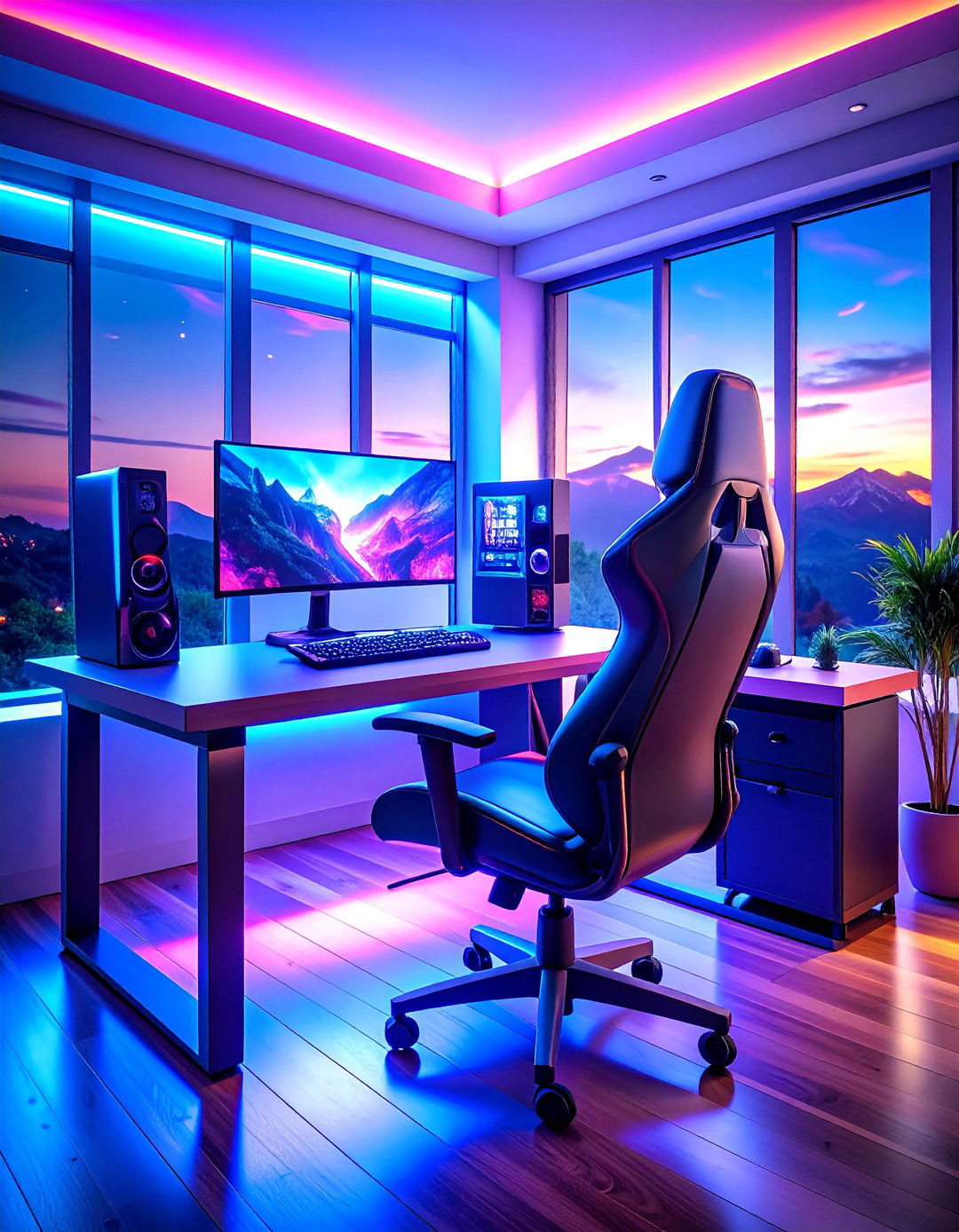
Investing in ergonomic furniture is essential for long gaming sessions. A desk at the proper height and a chair with adjustable lumbar support help maintain good posture and prevent fatigue. Position your desk near natural light sources, but avoid direct glare on monitors to reduce eye strain. Leave ample space for leg movement, and choose a desk with a rounded front edge to alleviate pressure on your wrists and forearms. Incorporate adjustable monitor arms to position screens at eye level, further minimizing neck strain. Consider L-shaped desks for multi-monitor setups, offering abundant surface area without cluttering the room. Strategic furniture placement optimizes comfort and enhances visual focus and gaming performance.
2. RGB and Ambient Lighting
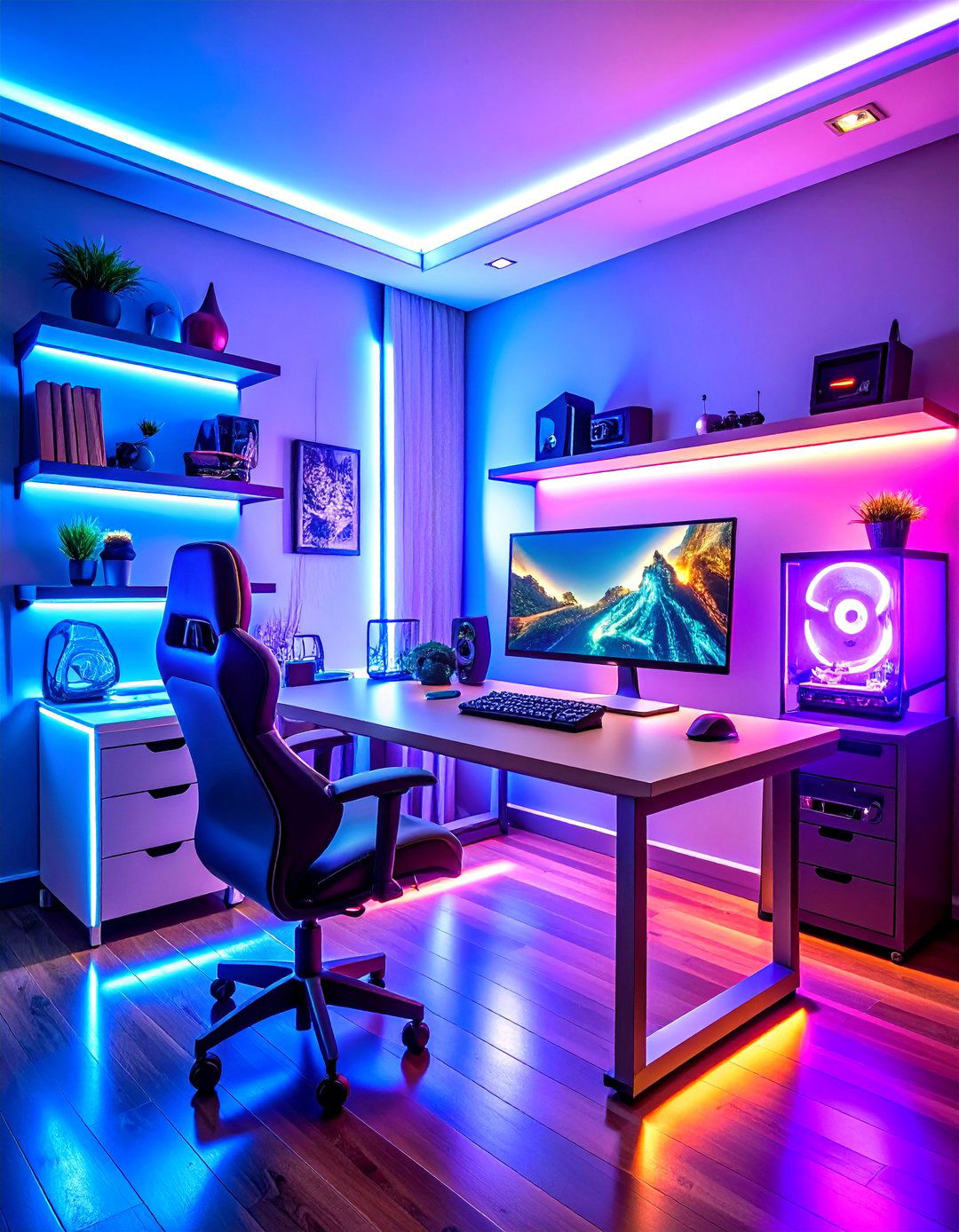
Dynamic lighting transforms a plain room into a vibrant gaming arena. LED light strips behind desks and along walls can be programmed to match in-game action or sync with music for a more immersive experience. Smart bulbs allow you to switch between cool whites for daytime tasks and rich RGB hues for evening gaming marathons. For subtle ambiance, consider recessed lighting with dimmable features or accent lamps highlighting collectibles. Position lights to minimize screen glare while still casting an inviting glow across the room. Effective lighting not only sets the mood but also reduces eye fatigue during extended play sessions.
3. Multi-Monitor Cinematic Setup
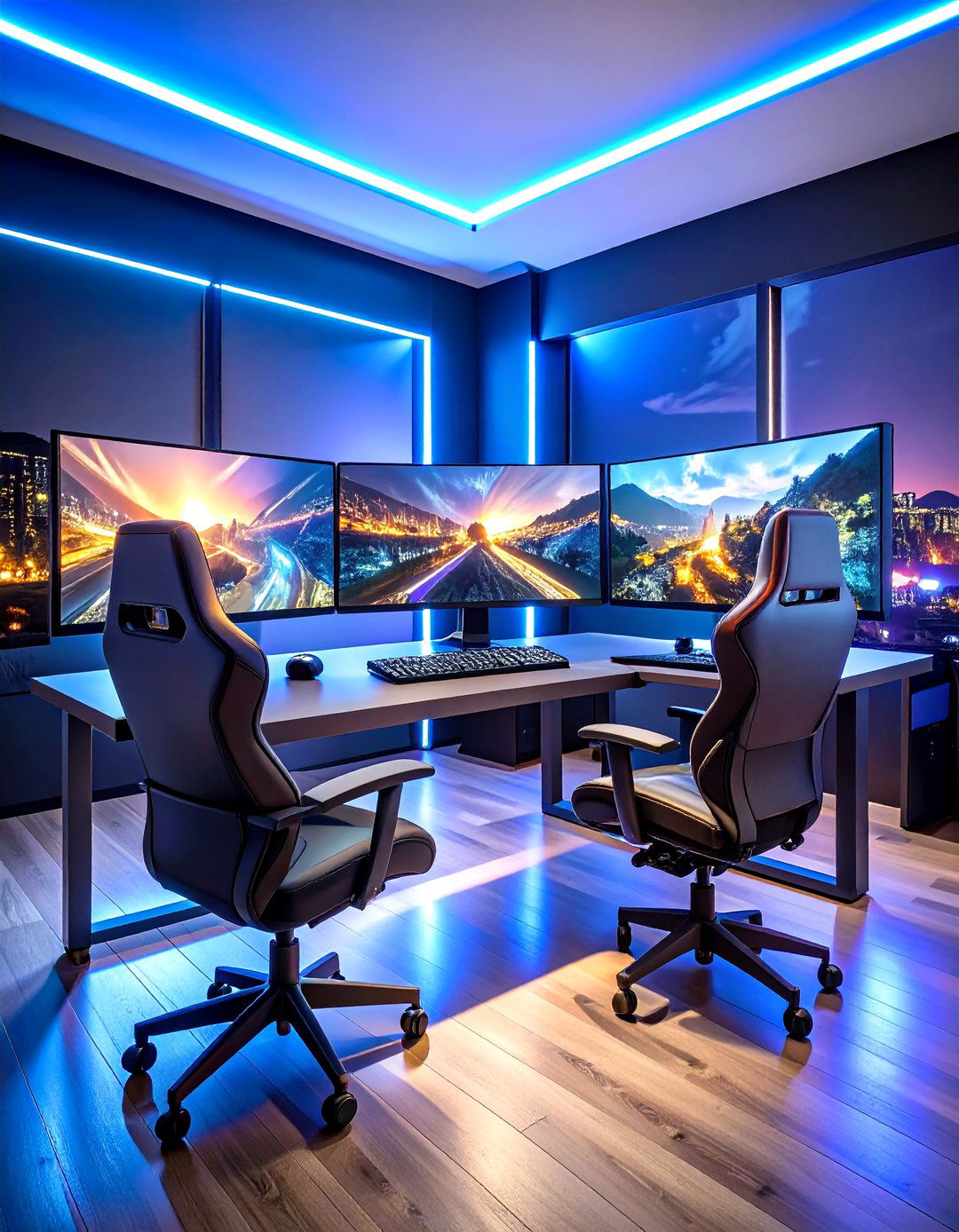
A multi-monitor arrangement elevates both productivity and immersion. Mount two or three monitors on a sturdy stand to create a panoramic view, ideal for racing sims, flight games, or expansive strategy titles. Ultrawide displays offer a seamless single-screen alternative, minimizing bezels and enabling uninterrupted visuals. Ensure your graphics card and desk can support the additional weight and power requirements. Cable raceways keep video, power, and peripheral cords neatly organized. Combine your monitors with a curved backdrop to draw you deeper into digital worlds, and balance screen height to reduce neck strain.
4. High-Fidelity Audio Setup
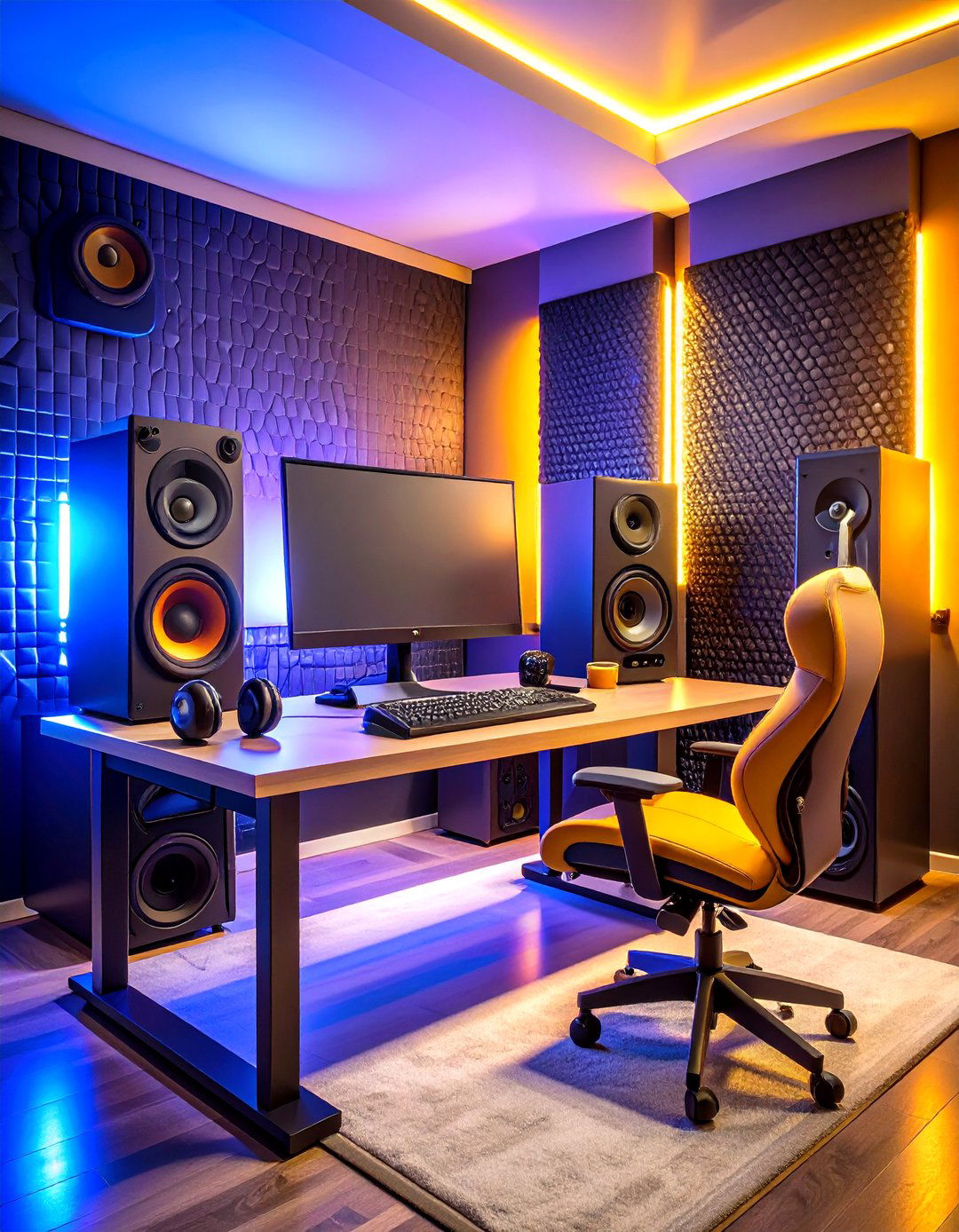
Sound can make or break immersion. Invest in a quality soundbar or a 2.1/5.1 speaker system placed at ear level for true stereo separation. For localized audio cues, position rear speakers behind your seating area. Alternatively, a high-end gaming headset with surround sound simulation provides positional accuracy without disturbing others. Acoustic foam panels on walls reduce echo and reverberation, enhancing clarity. A dedicated headphone stand with integrated USB passthrough keeps your desk uncluttered. Prioritize devices with low latency to avoid audio lag, ensuring footsteps and gunshots land precisely when they should.
5. Themed Decor and Wall Art
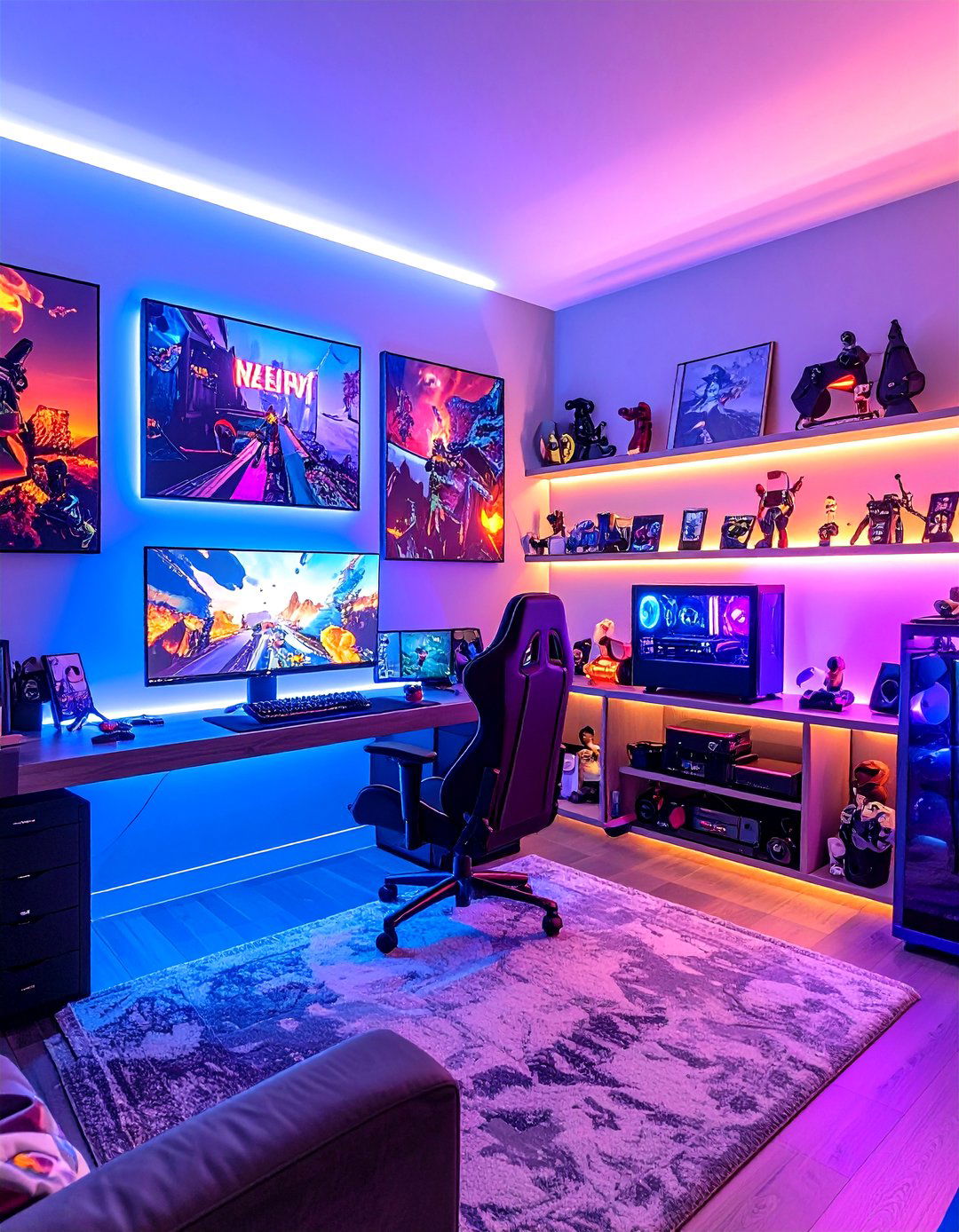
Personalizing your space with themed decor turns a room into a celebration of your favorite franchises. Wall decals, canvas prints, or framed posters can showcase iconic game artwork or characters. For a minimalist take, select monochrome pieces that complement your color scheme. Shelves with LED backlighting beautifully display collectible figurines, retro cartridges, or limited-edition statues. Accent walls painted in bold hues—neon green for sci-fi themes or muted earth tones for fantasy realms—provide a dramatic backdrop. Rotate art seasonally or per release cycle to keep the space feeling fresh and engaging.
6. Cable Management Solutions

A tidy gaming room not only looks better but also prevents accidental disconnections. Use adhesive cable clips along desk edges to route wires out of sight. Under-desk trays and raceways conceal power strips and excess cable length. Velcro straps and zip-ties bundle cords neatly, while braided cable sleeves offer a sleek, uniform appearance. For wall-mounted monitors, consider in-wall conduit kits (where permissible) to hide cables completely. Labeling each cord simplifies troubleshooting and future adjustments. Clean cable management enhances airflow around hardware, too, contributing to cooler operating temperatures.
7. Custom Gaming Desk
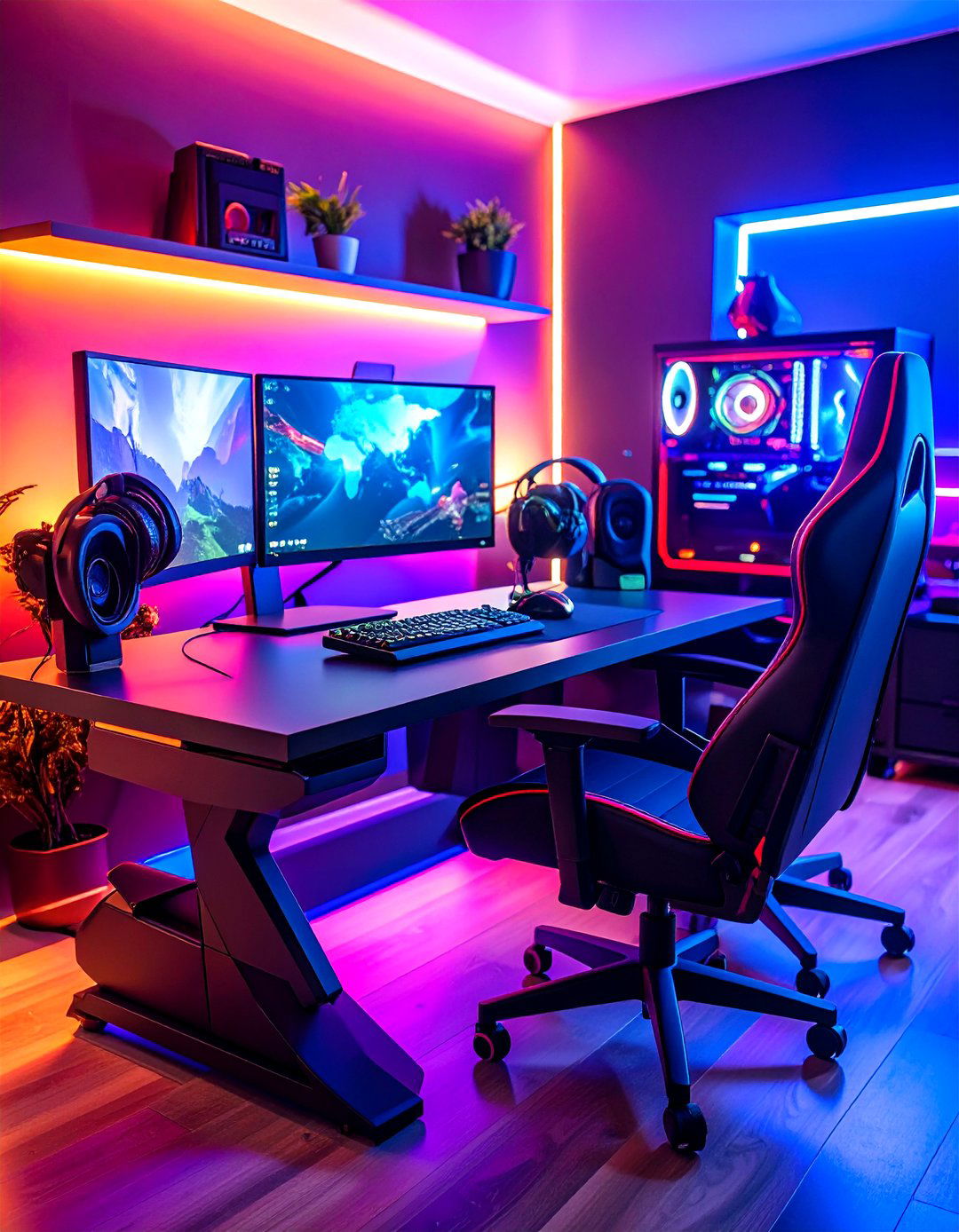
A bespoke desk tailored to your needs is the centerpiece of any gaming room. Look for desks with built-in cable channels, headphone hooks, and cup holders. Height-adjustable electric desks offer the flexibility to switch between sitting and standing positions. Some models include wireless charging pads integrated into the surface, keeping your phone powered throughout sessions. If space is limited, a foldable or corner desk maximizes floor area. Materials like tempered glass or carbon-fiber finishes not only look futuristic but also resist scratches and spills. Choose sizes that accommodate peripherals without feeling cramped.
8. Comfortable Gaming Chair
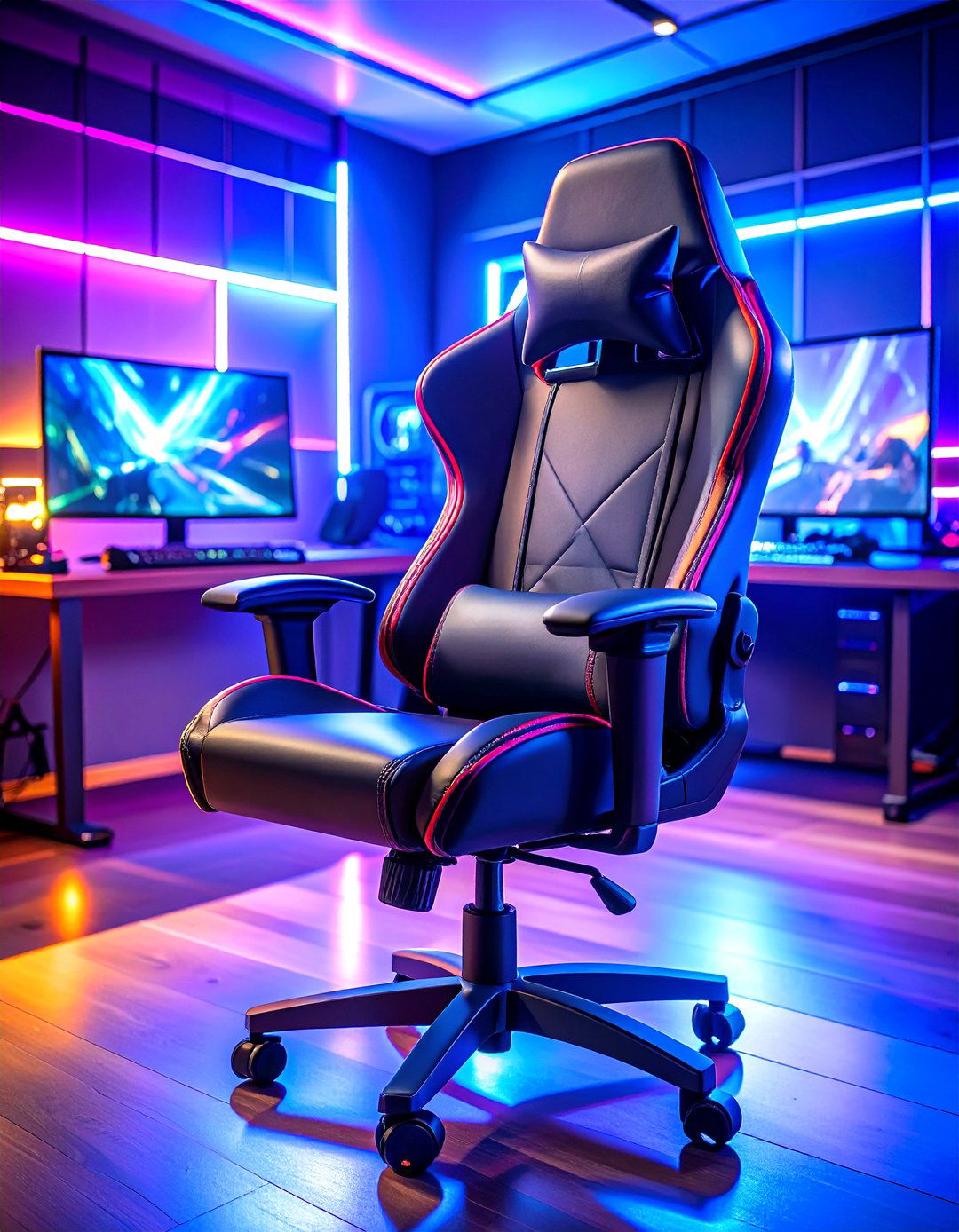
A high-quality gaming chair provides support and comfort for marathon sessions. Features to look for include adjustable armrests, tilt lock mechanisms, and high-density foam padding. Mesh backs improve airflow, preventing overheating, while plush upholstery enhances durability. Chairs with a reclining function allow for quick breaks between matches. For a more luxurious touch, leather or vegan leather options with built-in lumbar pillows offer both style and support. Position your chair on a smooth rolling mat to protect floors and maintain easy mobility.
9. VR Gaming Corner

Dedicating a corner of your room to virtual reality ensures safe play. Clear at least six by six feet of floor space to prevent collisions with furniture. Install ceiling cable management systems to suspend headset cords overhead, eliminating trip hazards. A small mat or foam tiles can denote your play zone boundary. Wall-mounted hooks or stands keep controllers organized when not in use. Enhance immersion with adjustable floor lighting or tactile feedback devices like vibration platforms. Ensure proper ventilation, as VR sessions can become physically intense.
10. Retro Gaming Showcase

Celebrate gaming history by dedicating a shelf or cabinet to retro consoles and cartridges. Use custom risers and acrylic display cases to highlight classic systems. Install antique-style bulbs or warm LED strips underneath shelves for a nostalgic glow. Label each section by console generation or franchise for an organized, museum-like display. Consider adding a small CRT TV or a retro-styled monitor for authentic connections. For an extra touch, hang vintage game posters or original cartridge art prints nearby.
11. Soundproofing and Acoustic Panels
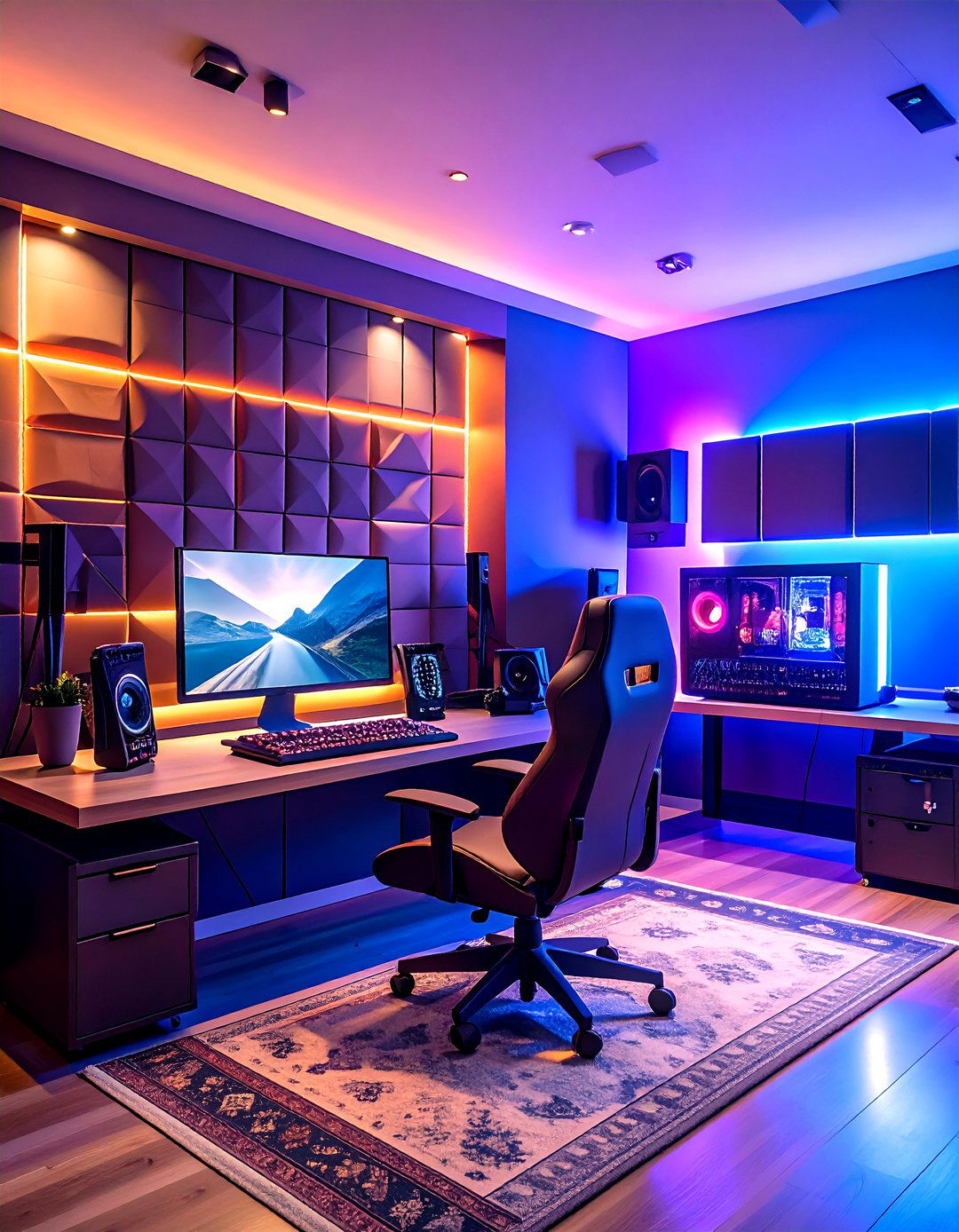
Managing noise benefits both your microphone recordings and household harmony. Acoustic foam panels absorb mid- to high-frequency sounds, reducing echo. Bass traps in corners manage low frequencies, preventing muddiness. Choose panels that complement your room’s palette—hexagon-shaped panels or fabric-wrapped designs add visual interest. Rugs and heavy curtains further dampen sound reflections. If construction permits, install resilient channels behind drywall to isolate wall studs and minimize sound transmission. Proper sound treatment elevates both game audio clarity and voice chat quality.
12. Smart Home Integration
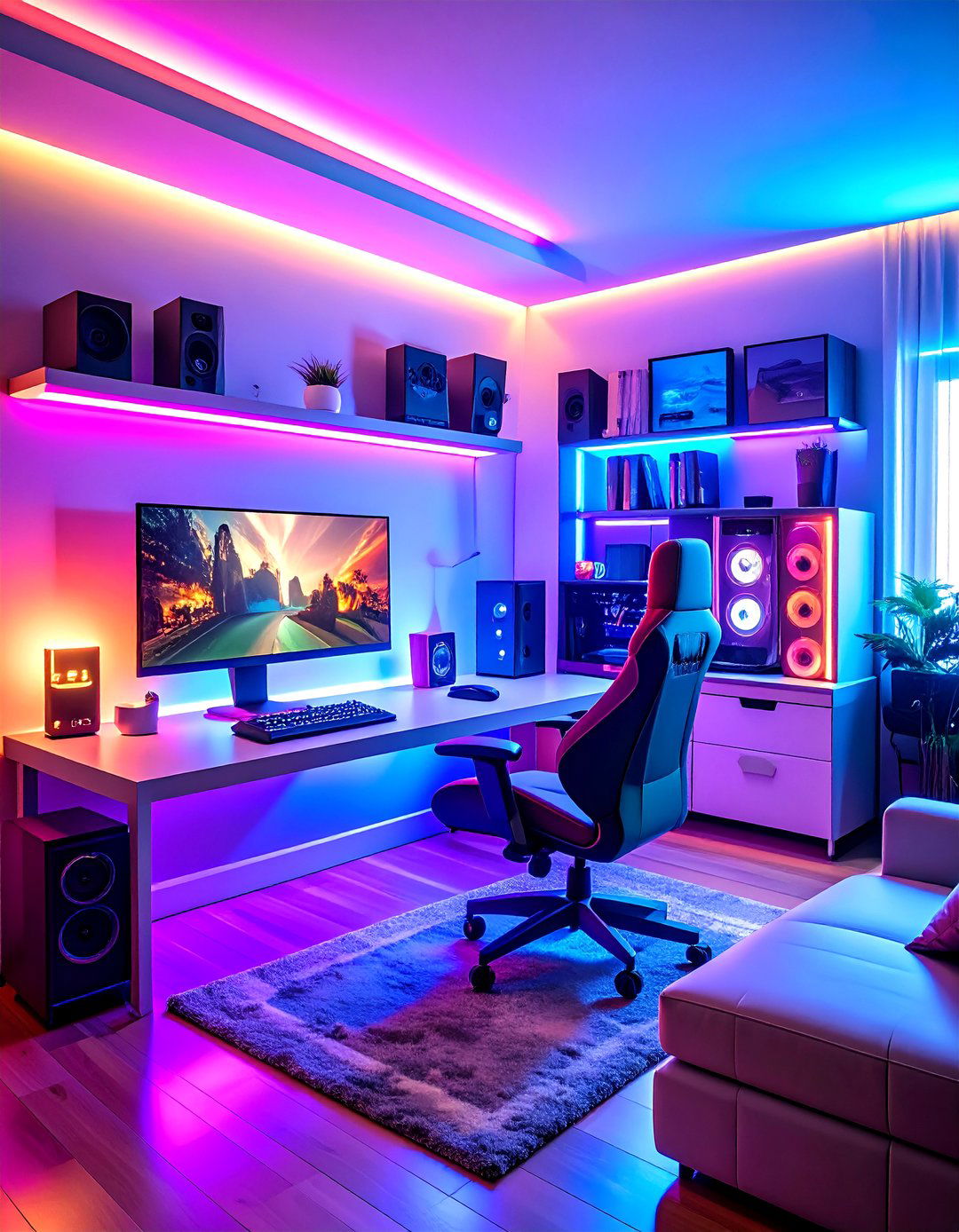
Bringing smart devices into your gaming room adds convenience and flair. Voice assistants can control lighting, temperature, and media playback without interrupting gameplay. Smart plugs allow you to power down peripherals automatically when not in use. RGB smart bulbs sync with PC software for game-responsive color changes. Programmable remotes consolidate commands for AV receivers, projectors, and sound systems. Monitoring room climate with smart thermostats keeps your equipment running optimally. Integration ensures that every aspect of your environment adapts to your gaming habits.
13. Mini Fridge and Snack Station

Keep snacks and beverages within arm’s reach by adding a compact mini fridge. Choose models with a front-mounted latch to avoid accidental openings. A small countertop above the fridge provides space for mugs, energy drinks, and healthy bites. Magnetic whiteboards on the fridge door serve as scoreboards or reminders. Incorporate sealed storage bins for chips and candies to maintain freshness. Position the station away from heat sources to ensure efficient cooling. Hydration and quick fuel boosts help maintain focus during extended sessions.
14. Streaming and Content Creation Setup
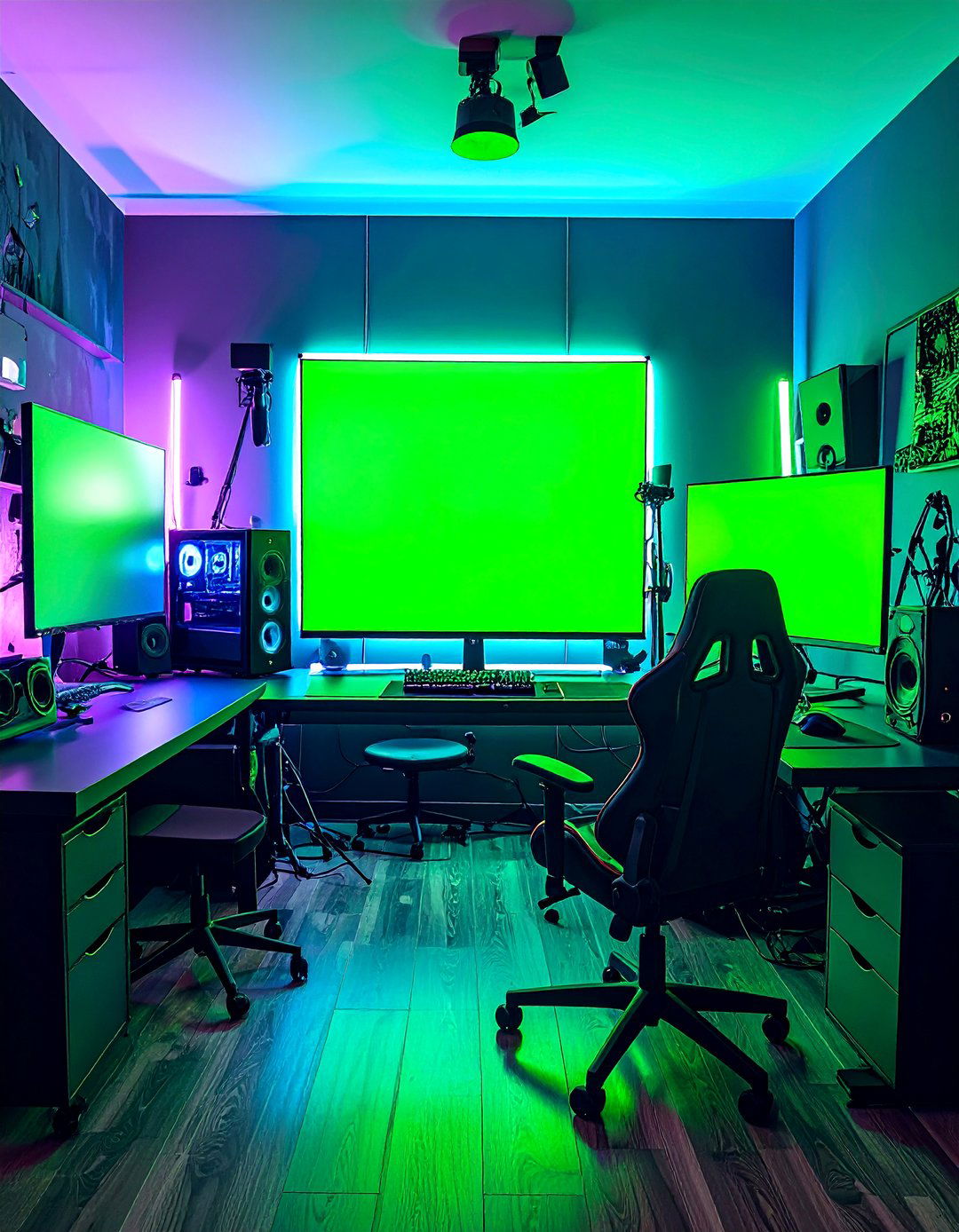
For streamers and content creators, a dedicated corner with appropriate lighting and background is key. Mount softbox or ring lights at 45-degree angles to evenly illuminate your face without harsh shadows. Use a green screen behind you for dynamic backgrounds and overlays. Integrate a quality microphone on a boom arm to isolate vocal capture. A secondary monitor dedicated to chat, alerts, and streaming software keeps your main screen uncluttered. Acoustic panels behind your camera reduce echo and improve audio quality for viewers.
15. Ambient LED Floor Panels and Light Strips
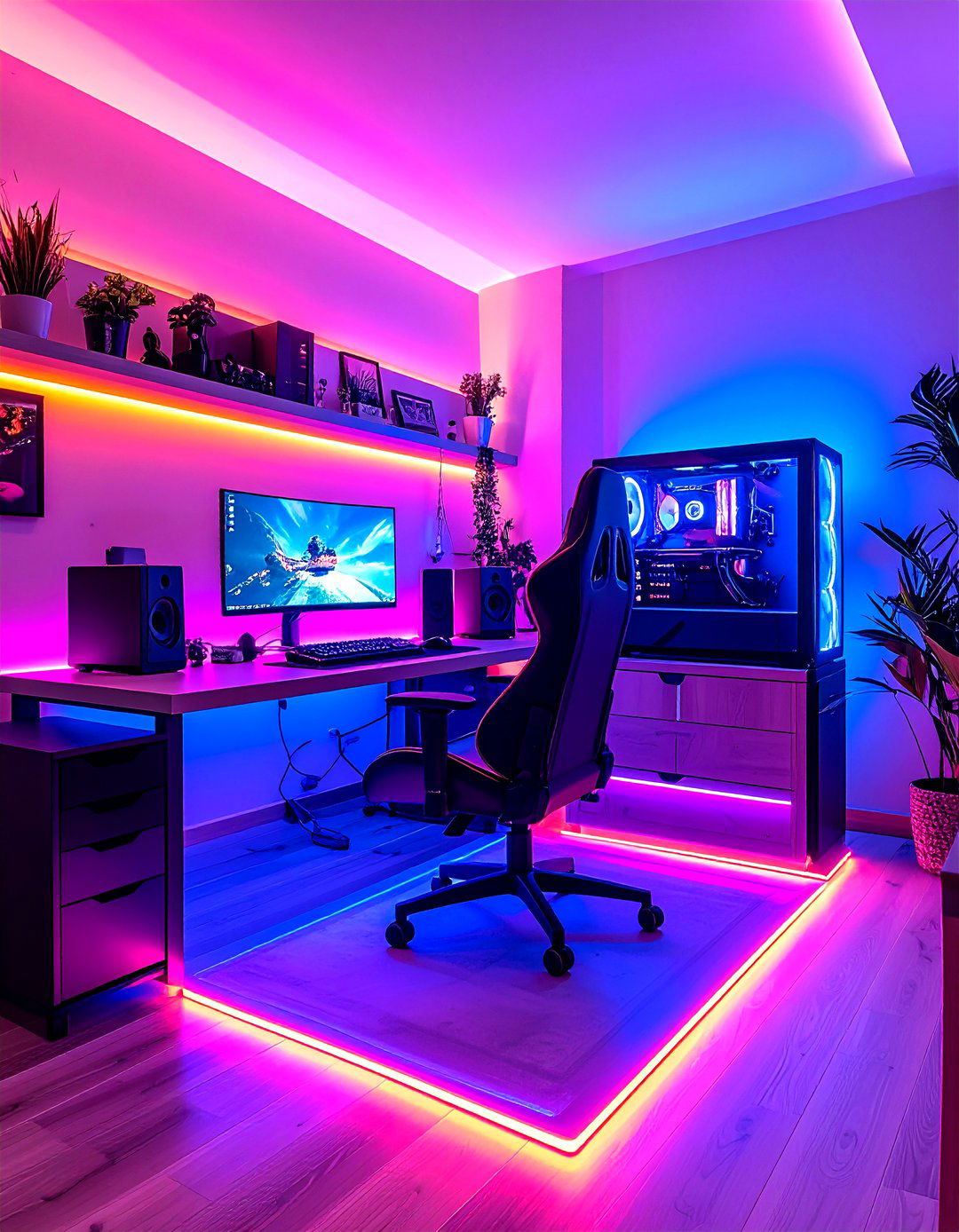
Floor-mounted LED panels and under-desk light strips offer immersive effects at lower eye level. Sync these lights with your game’s audio or visual cues for dynamic environmental feedback. Photocell-compatible panels can adjust brightness based on ambient light, reducing eye strain. Mount adhesive RGB strips under shelves, behind chair rails, or along baseboards for a continuous glow. For a gaming cave vibe, choose cooler tones like blue and purple; warmer tones work well for themed setups.
16. Gaming Console Display and Storage
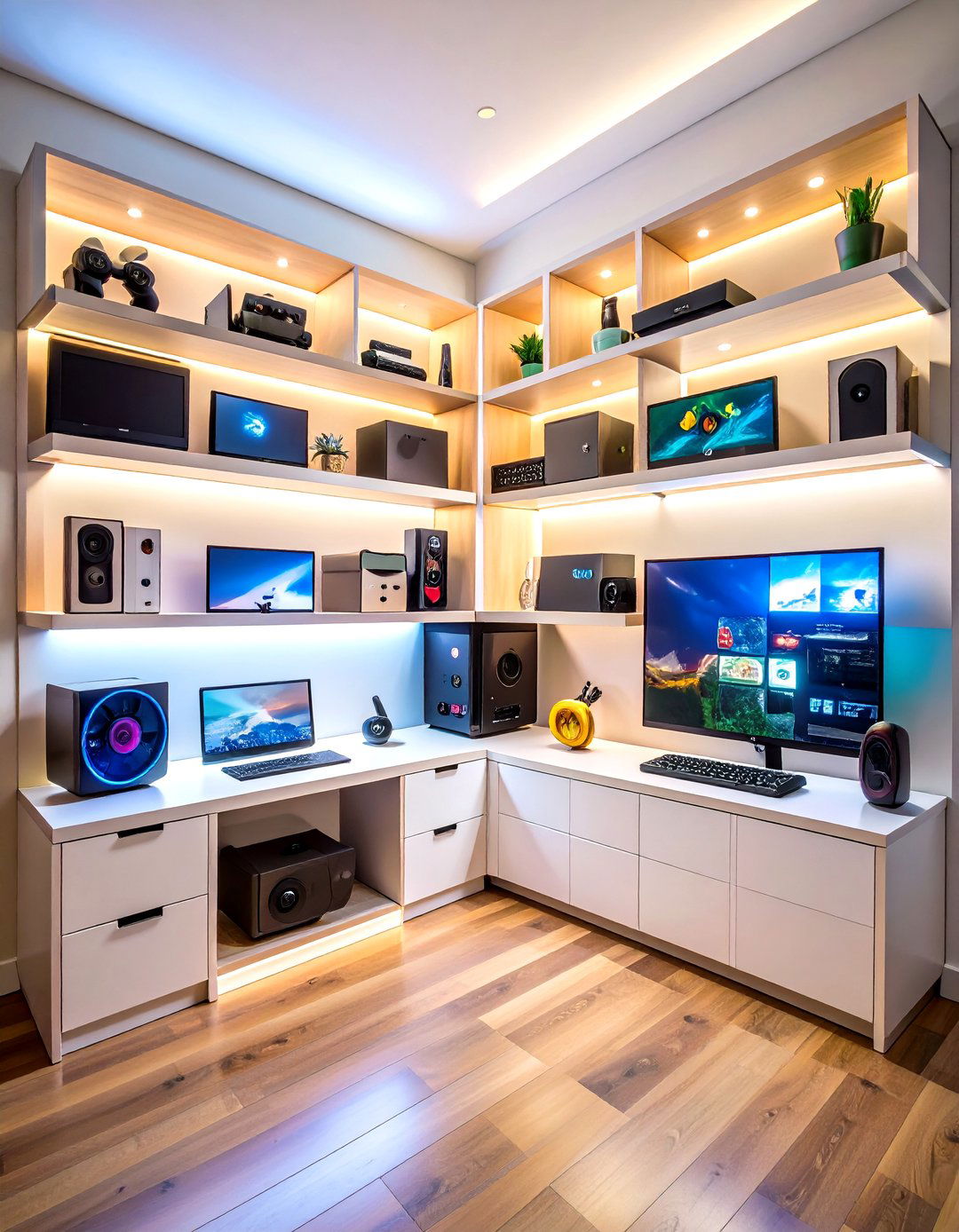
Custom shelving keeps consoles organized and dust-free. Select adjustable shelves to accommodate varying console heights and accessory bundles. Integrate ventilated sections or open backs to prevent overheating. Label each shelf with console names or generation markers for quick identification. For an aesthetic touch, use floating shelves with backlighting or glass-front cabinets. Include drawers or bins below for controllers, cables, and game cases. A well-organized console station streamlines your workflow and celebrates your hardware collection.
17. Wall-Mounted TV and Console Setup
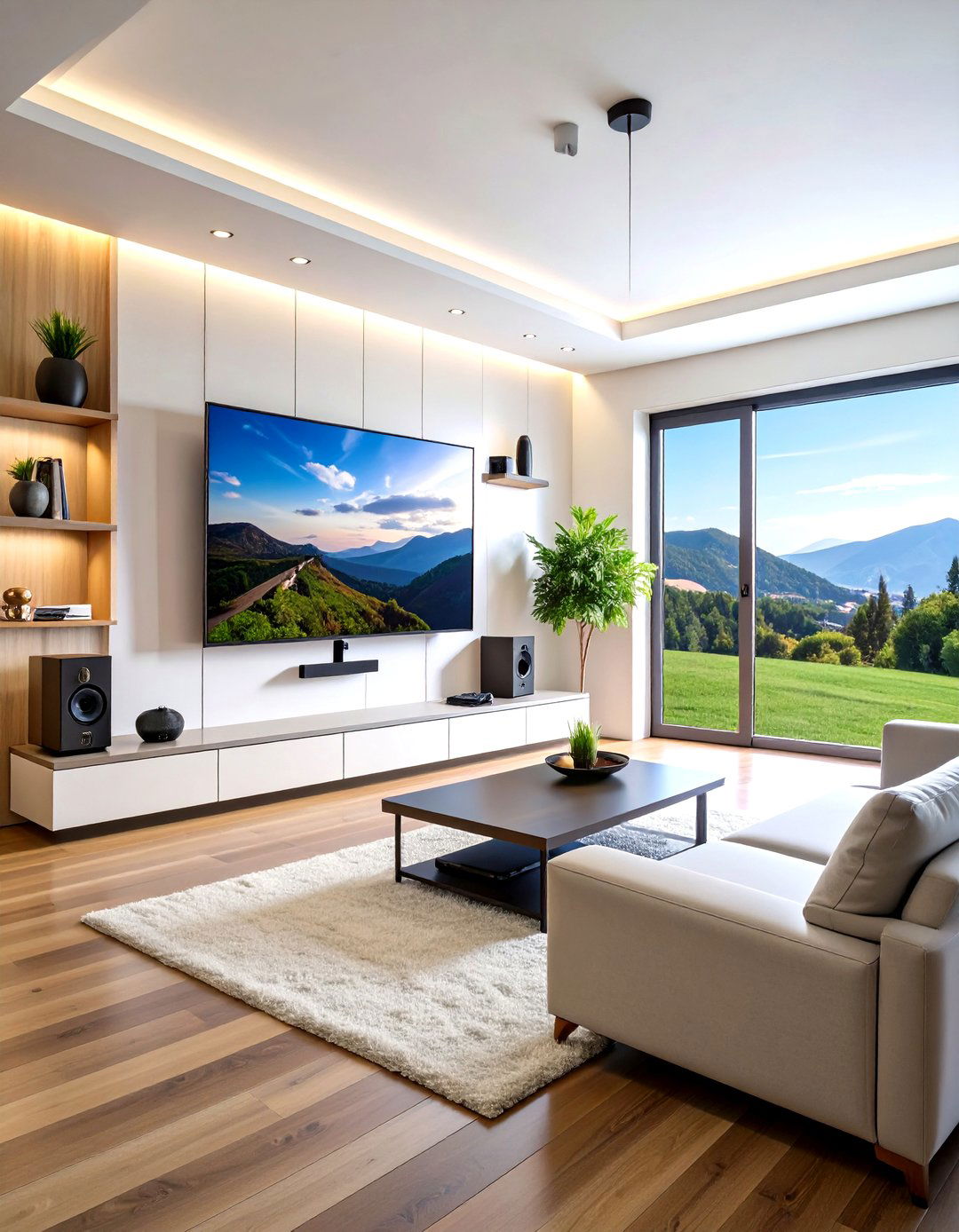
A wall-mounted TV saves floor space and offers cinematic viewing angles. Use a tilting or full-motion mount to adjust for glare and seating positions. Conceal cables with in-wall rated cable management kits or surface-mounted raceways painted to match the wall. Beneath the TV, install a floating shelf for consoles and media players. Ensure sufficient ventilation around devices. Combine with a soundbar mounted just below the screen for a sleek, integrated look.
18. Cozy Seating Zone and Lounge Area
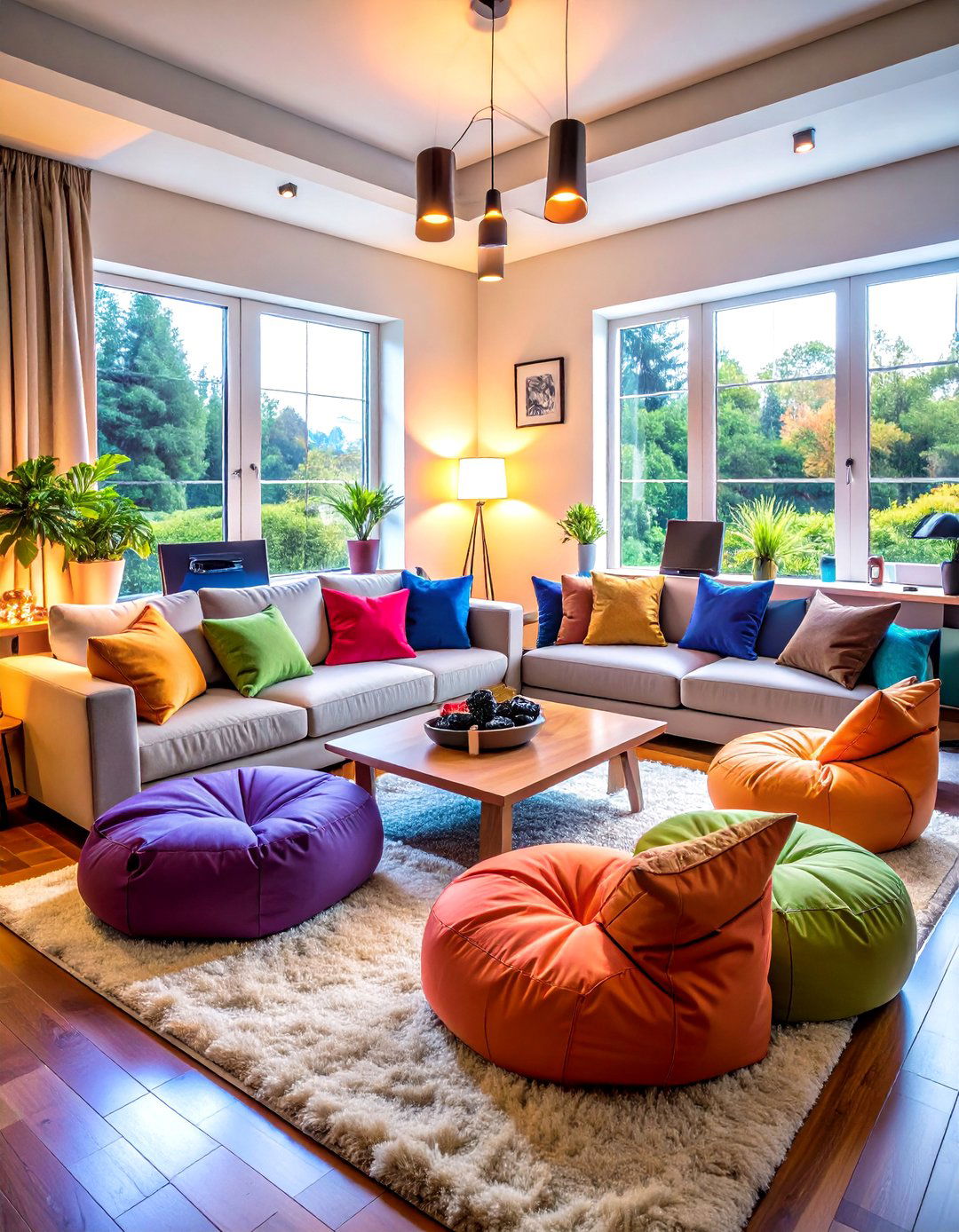
Adding a lounge area with a sofa or bean bags provides space for friends and casual gaming. Arrange seating to face secondary screens for multiplayer or co-op titles. Include side tables or ottomans for controllers, remotes, and snacks. Soft throw blankets and plush rugs enhance comfort and absorb sound. For touch-friendly controllers, choose sofa tables with charging docks. A cozy corner invites spectators and makes the room versatile for social gatherings.
19. Mood-Enhancing Projectors
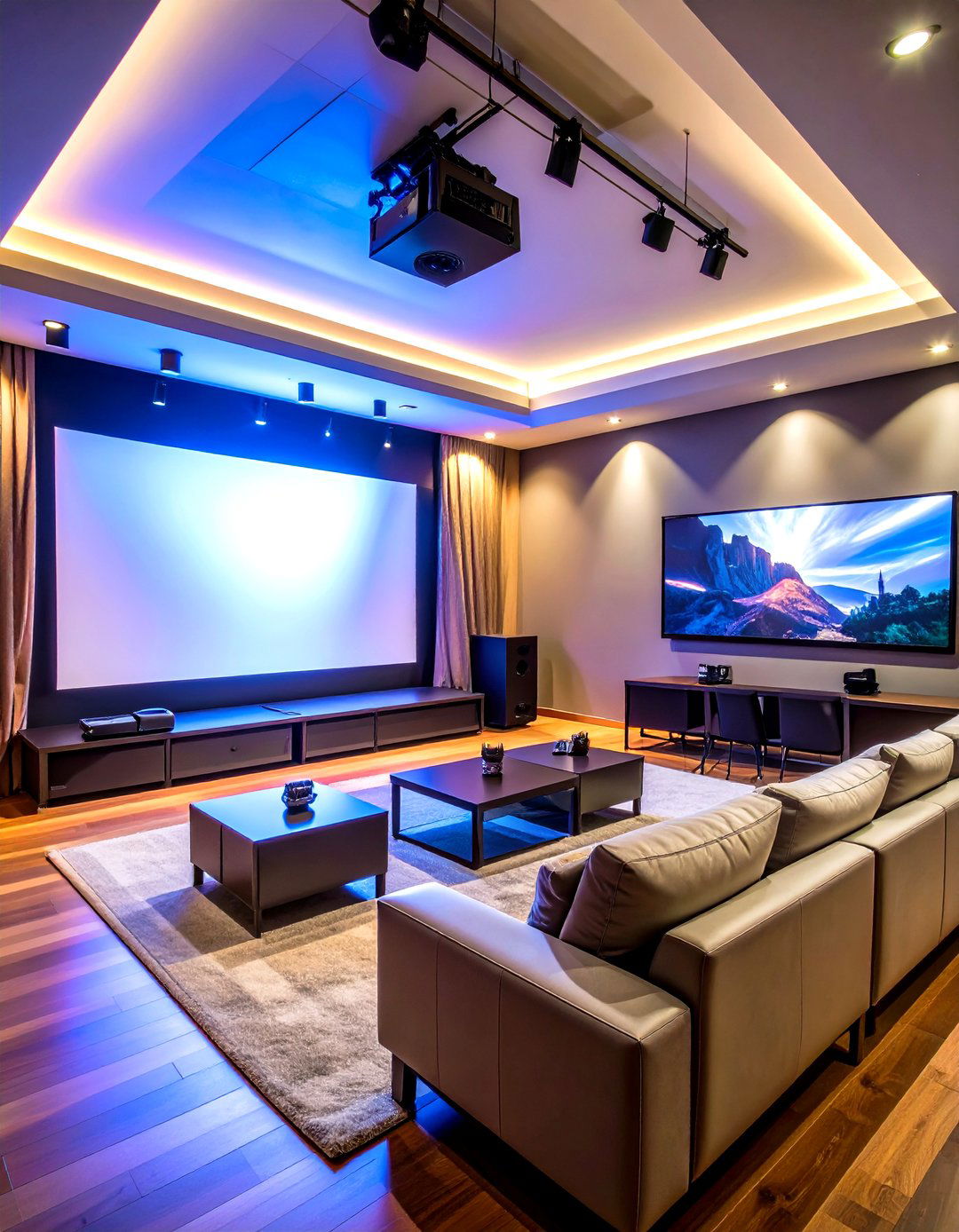
Projectors can create a cinematic, wall-sized display for immersive gameplay. Opt for short-throw models to minimize shadows and maximize image size in small rooms. Pair with a retractable screen or a matte white wall for optimal clarity. Integrate ambient bias lighting around the screen to reduce eye strain. Ensure your projector supports low latency modes and high refresh rates suitable for gaming. Ceiling mounts keep the unit out of the way, and cable conduits maintain a clean install.
20. Personalized Accessories and Memorabilia Display
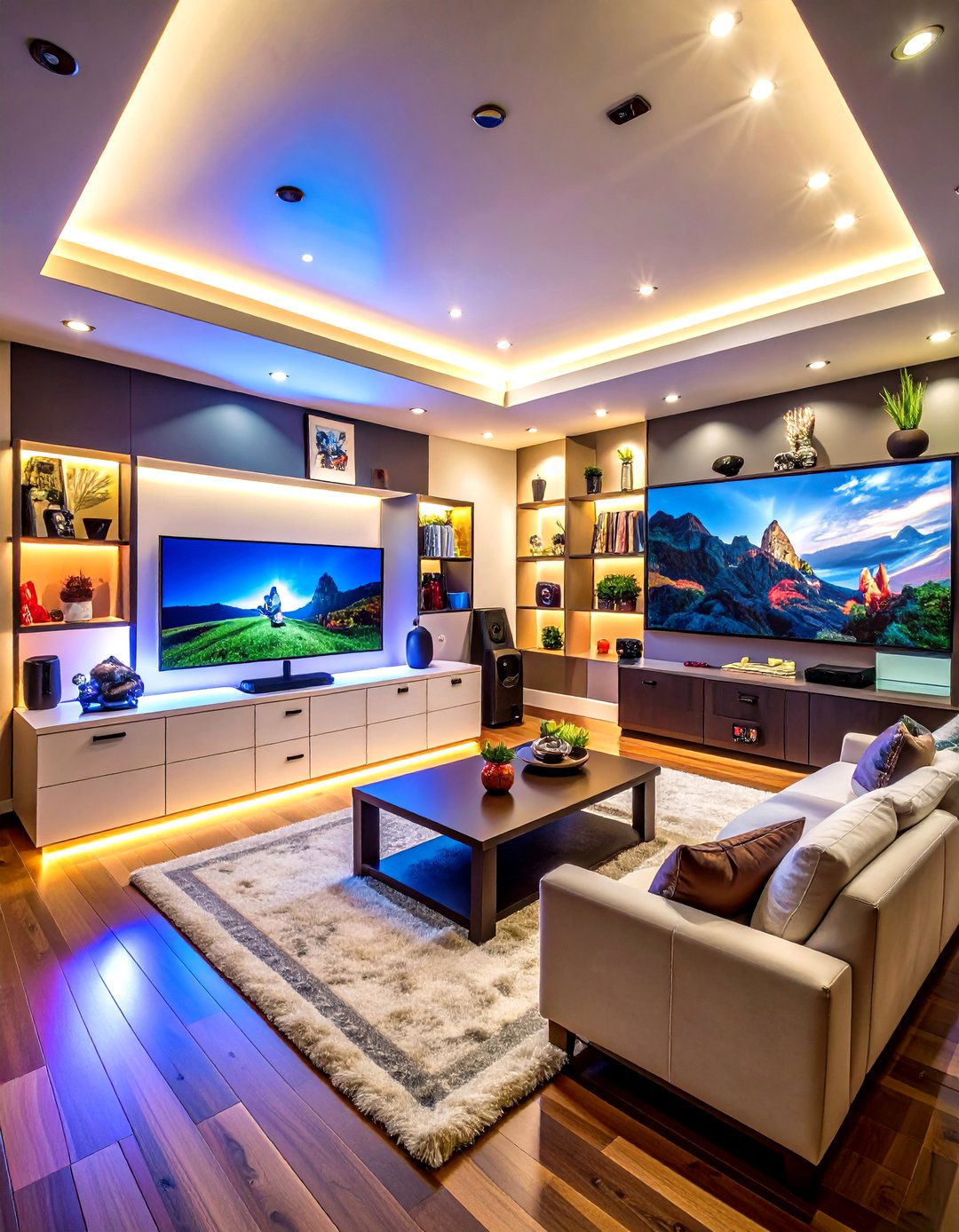
Personal touches make your gaming room uniquely yours. Display signed memorabilia, limited-edition collectibles, or custom artwork in dedicated niches. Use glass-front cabinets with internal LEDs to showcase prized items securely. Frame and hang signed posters or original concept art for a gallery feel. Add custom rugs featuring favorite game logos or patches on walls. Rotating seasonal displays—such as holiday-themed decor or new game releases—keep the space feeling fresh and personal.
Conclusion:
Designing the perfect video game room is a balance of ergonomic function, aesthetic flair, and technical performance. By implementing comfortable furniture, dynamic lighting, and tailored decor, you create an environment that enhances both your gameplay and overall well-being. Thoughtful organization—such as cable management, dedicated storage, and smart integration—ensures a clean and efficient setup. Whether you’re a competitive player, streamer, or casual gamer, these 20 ideas offer a roadmap to personalize your space, making every session more immersive, enjoyable, and uniquely your own.



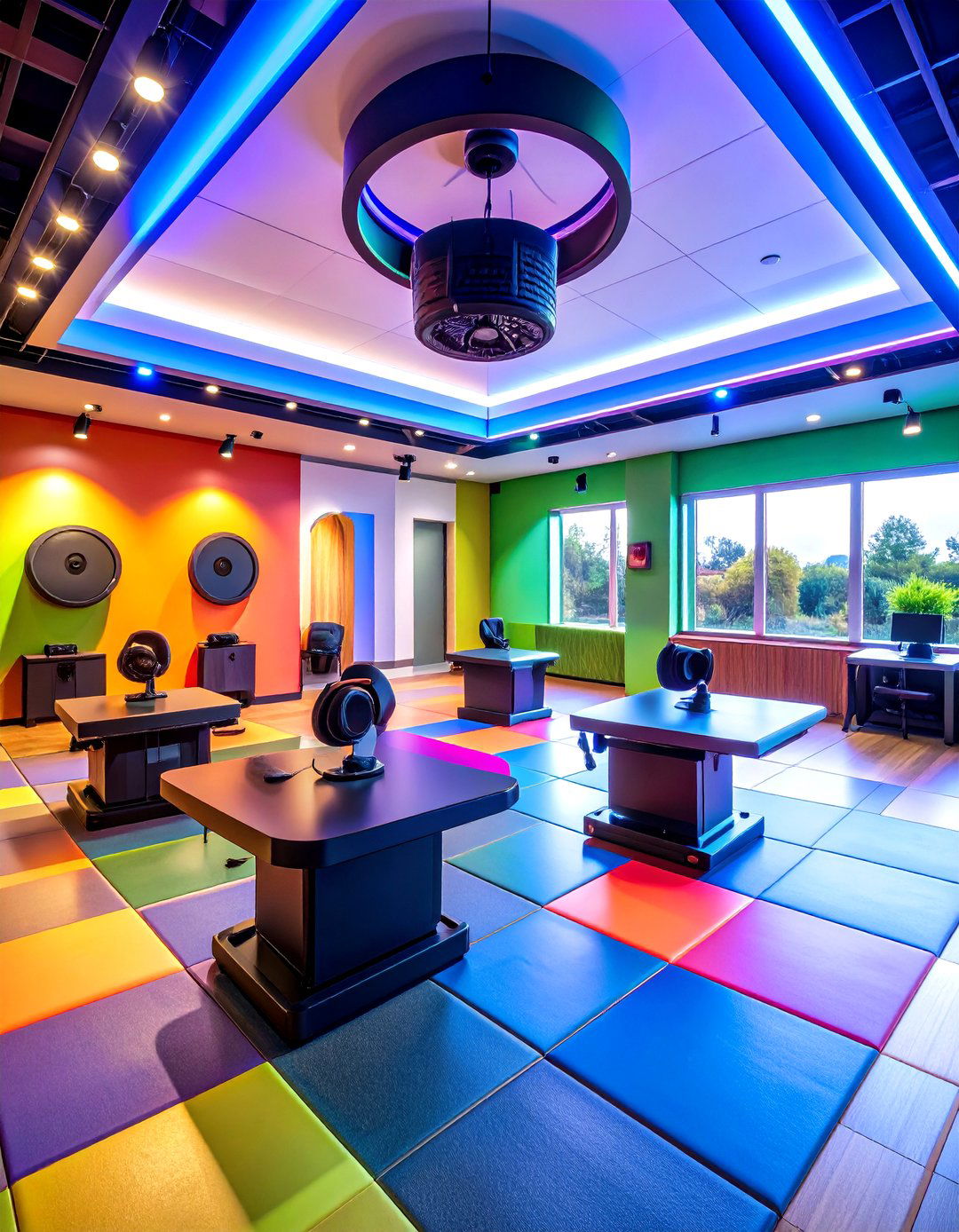
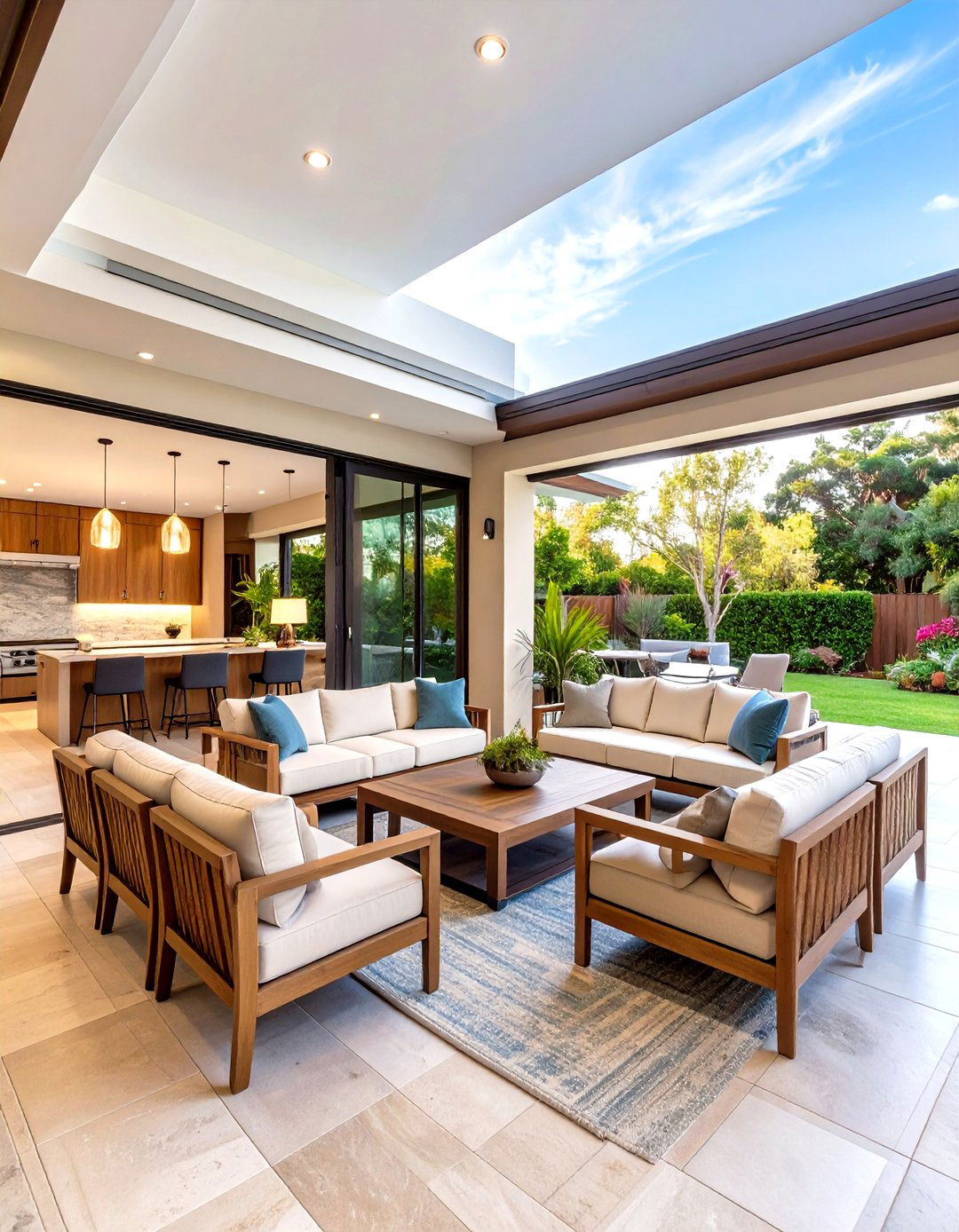
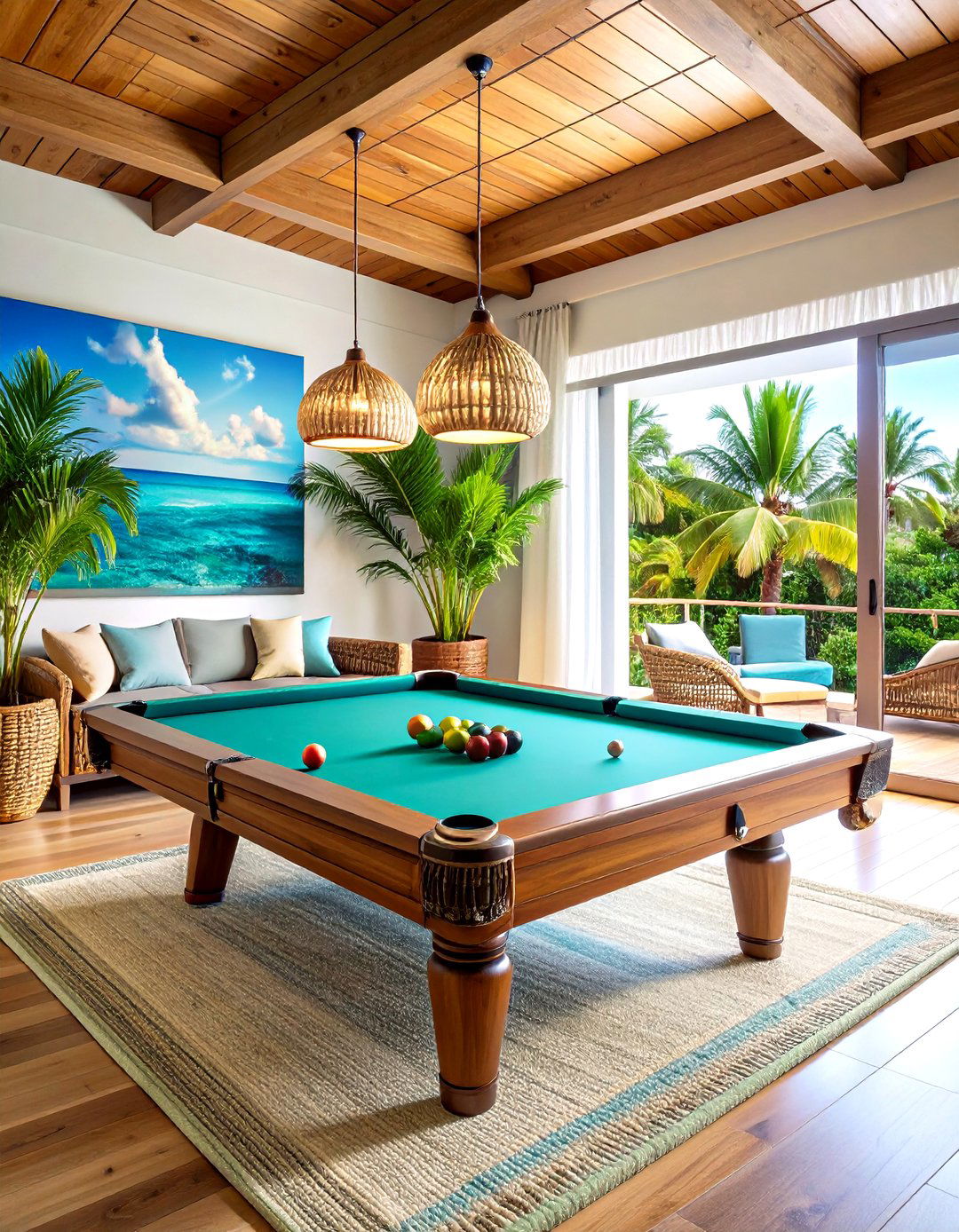
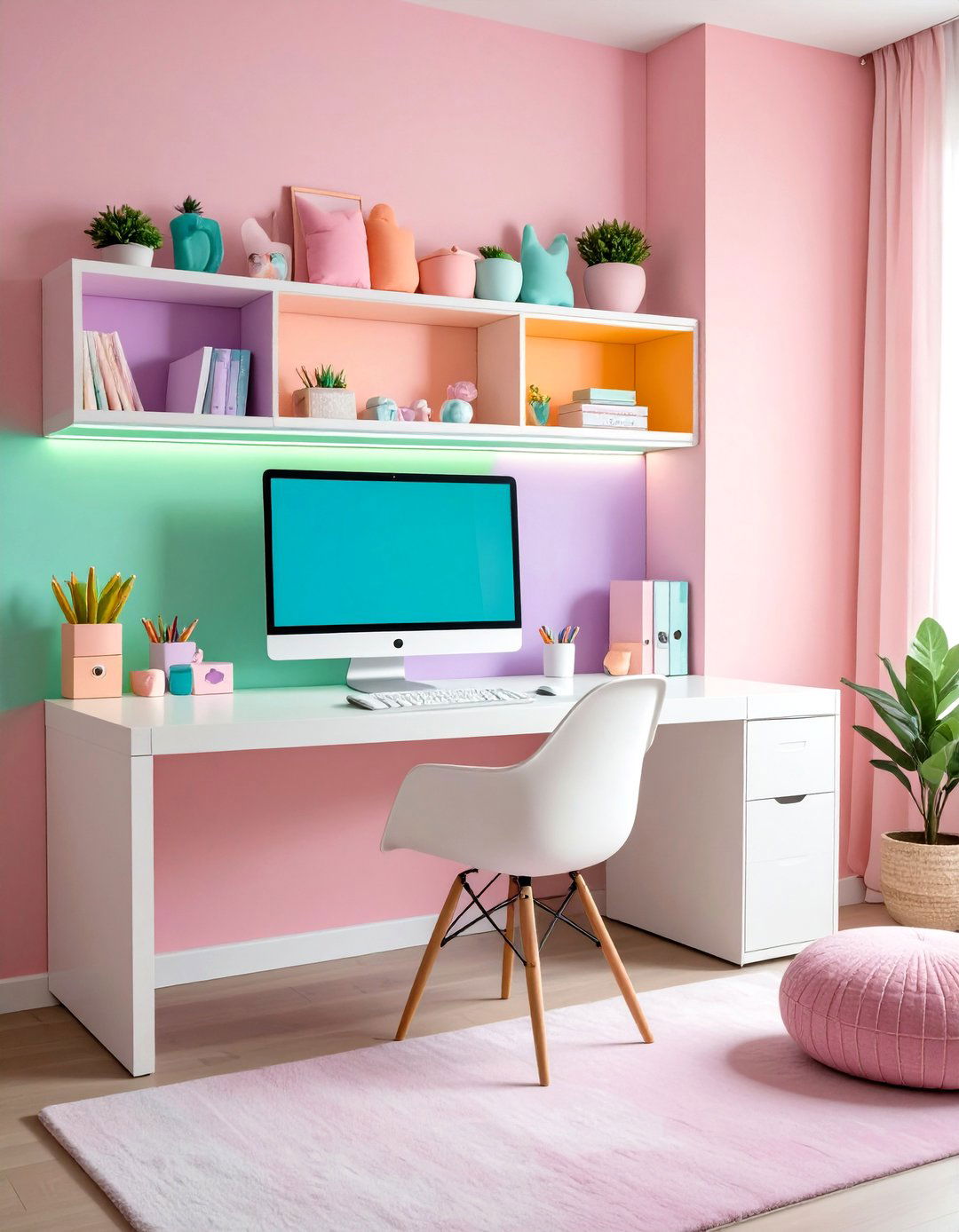




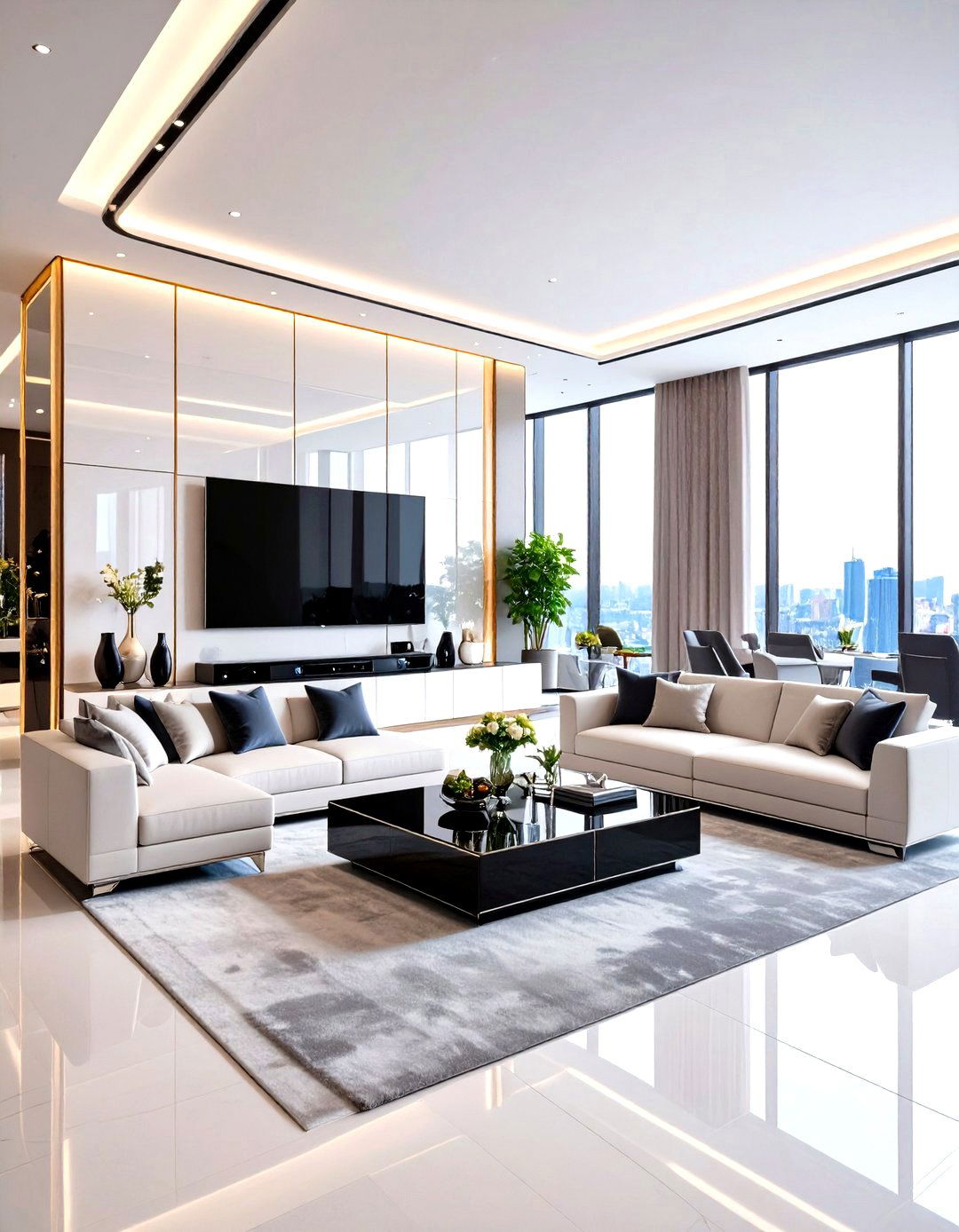
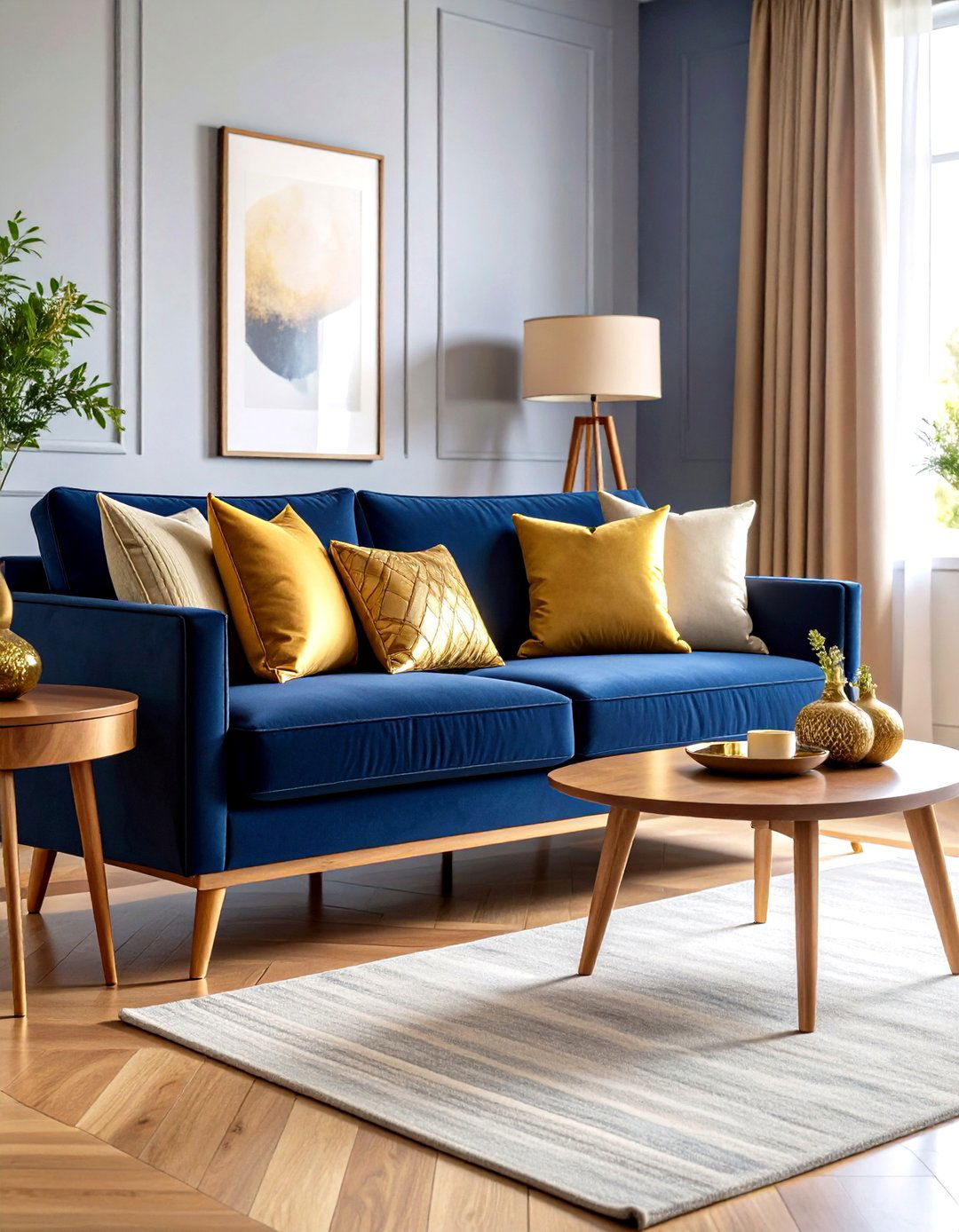


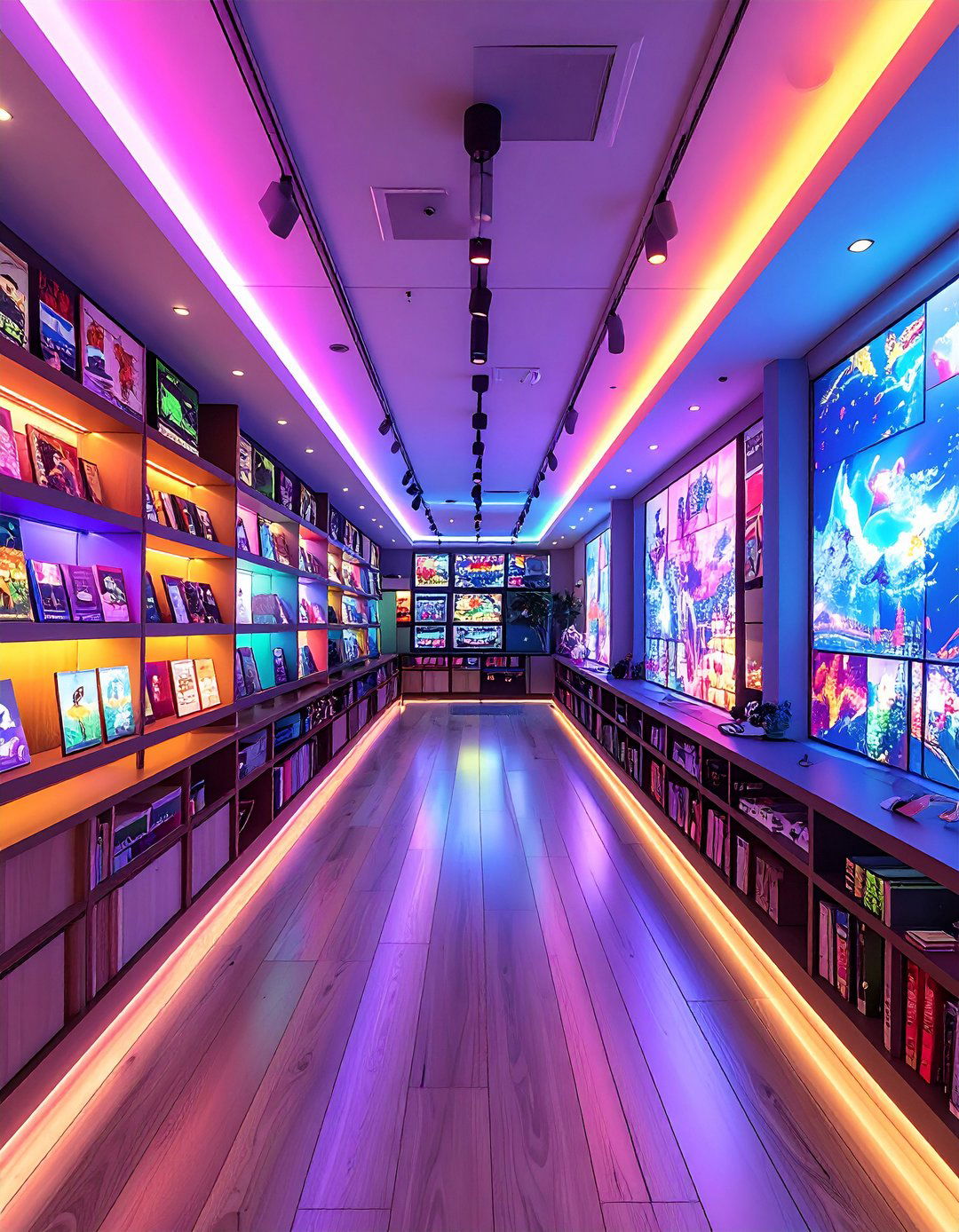
Leave a Reply